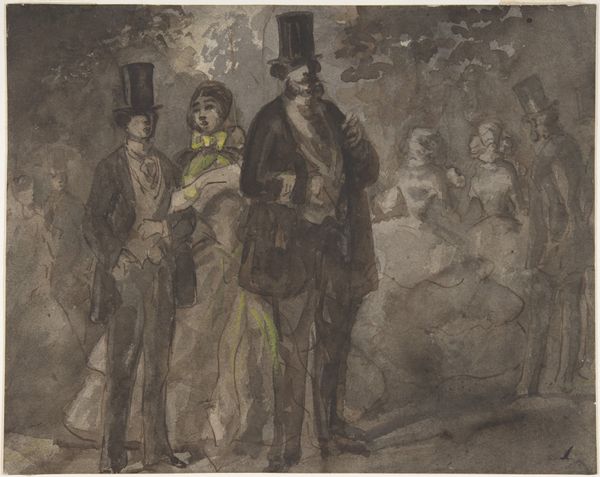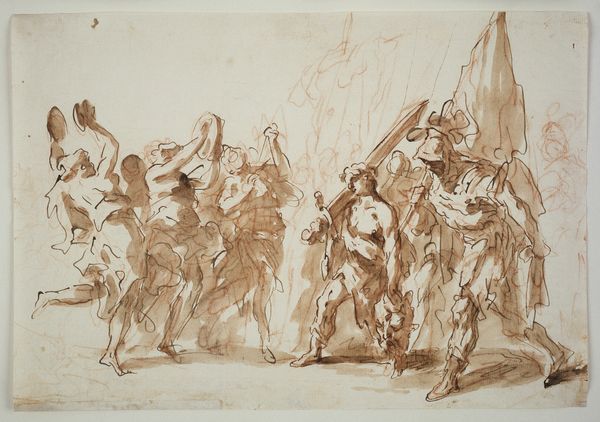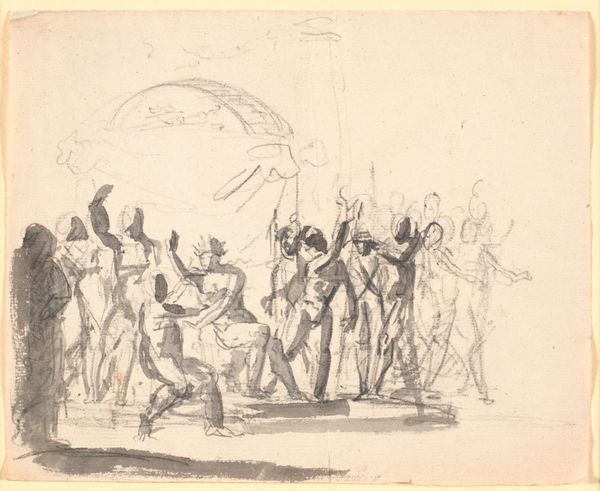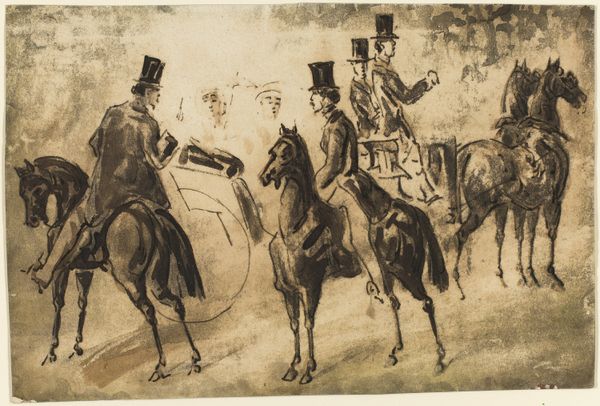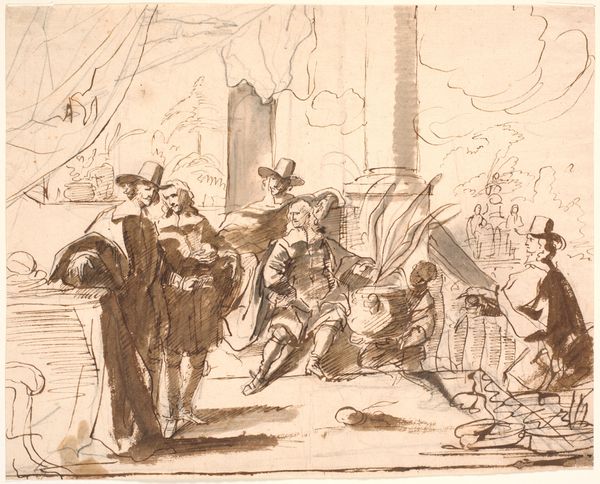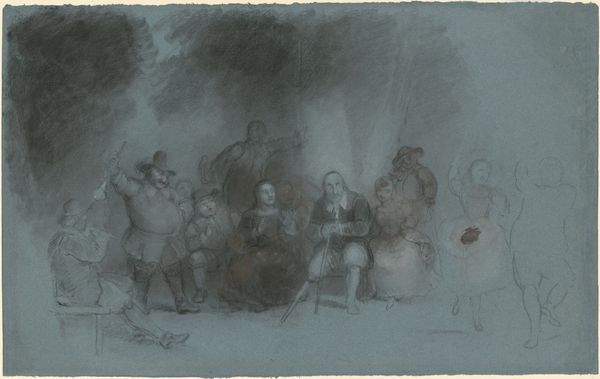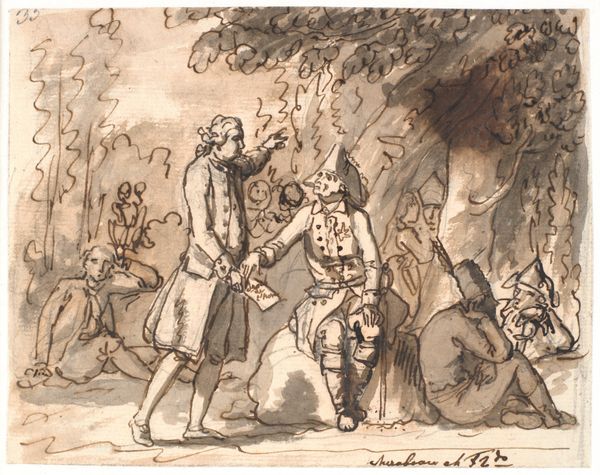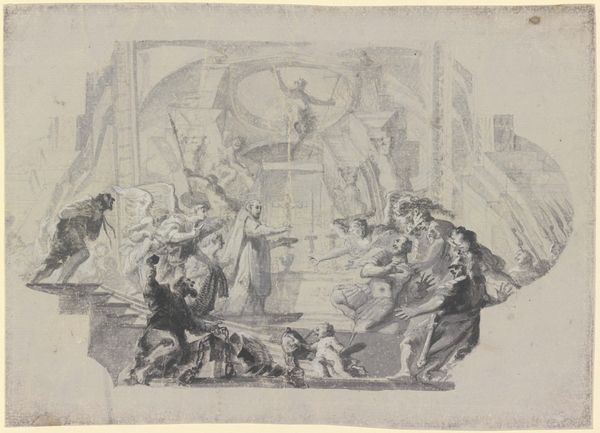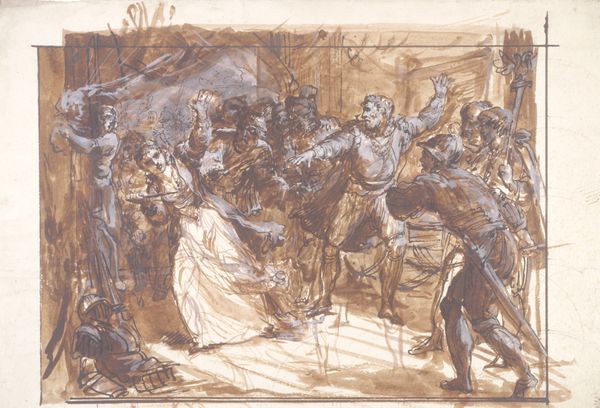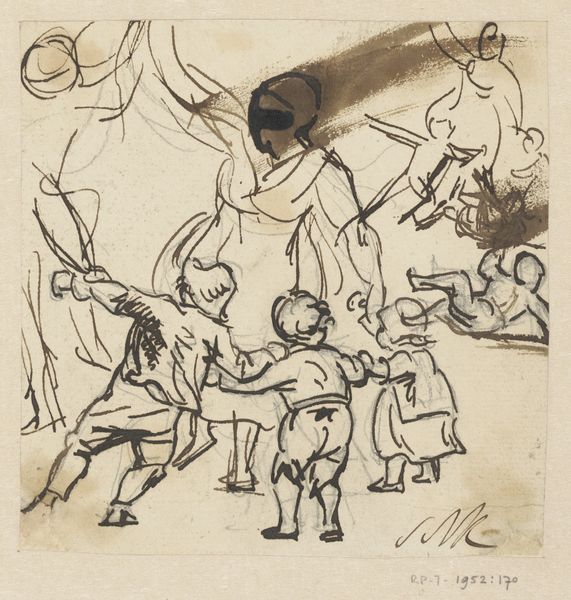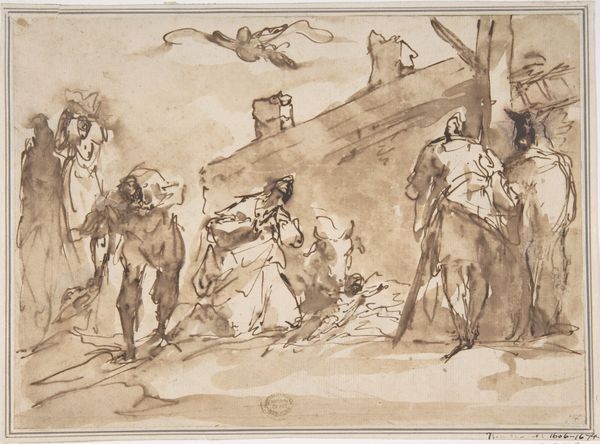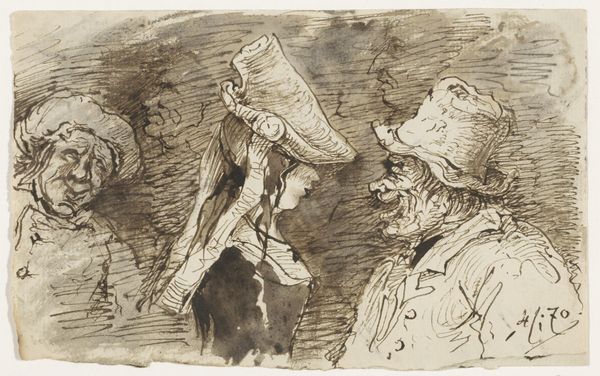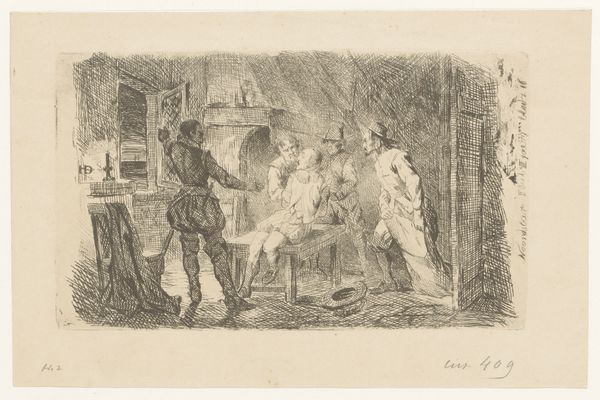
Louis-Napoleon Bonaparte on the Second of December 1851 - 1855
0:00
0:00
Dimensions: 6 5/16 x 11 5/8 in. (16.1 x 29.6 cm)
Copyright: Public Domain
Curator: Looking at this work, it’s interesting to note the evident speed in its creation, likely indicative of its purpose as reportage. Editor: It's somber, almost mournful, despite depicting what appears to be a moment of authority. The wash gives it this ghostly quality, like a memory fading. Curator: Indeed. This is Constantin Guys' "Louis-Napoleon Bonaparte on the Second of December," created between 1851 and 1855, now housed at the Met. It’s a drawing executed in watercolor and ink. I am drawn to its stark, almost brutal simplicity. There’s little embellishment, suggesting Guys focused on immediacy of record, the speed with which he documented this public display of power and potentially its immediate repercussions. The very choice of materials indicates a desire to create records that can be transported and shared without any expensive cost and machinery Editor: Precisely! This feels less like glorification and more like visual documentation, possibly commissioned, that aims at presenting, constructing a narrative for consumption, a controlled political imagery. How are we meant to see the authority here being displayed by Louis-Napoleon? Is he on display, elevated on a horse for us or protected by the horse and his uniformed guards behind him? Curator: Interesting question. What I find compelling is the tension between the seeming grandeur of the procession and the clear evidence of artistic expediency. The quick brushstrokes, the limited color palette. Its the material record of quick production for consumption as you said, potentially reflecting Guys' response to an emerging need for mass produced imagery and perhaps his commentary of art under an expanding state apparatus. Editor: Absolutely, that mass consumption being key here! The print industry was taking off, offering various forms of newspapers, magazines, ephemera that depended on illustration and quickly reproducible imagery. Curator: Thank you, yes, and I'm also thinking of its place now. At the Met, it becomes an object of connoisseurship, something almost at odds with its genesis. Editor: That repositioning highlights the complex, shifting roles art takes across history. Curator: I agree. It makes me reconsider how labor and time are inscribed into these objects that come to be labeled artworks and it becomes hard to strip them away to better understand what material processes defined them Editor: Agreed. Art and history are inextricably linked in these public records and state commissioned artworks!
Comments
No comments
Be the first to comment and join the conversation on the ultimate creative platform.
